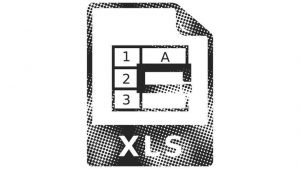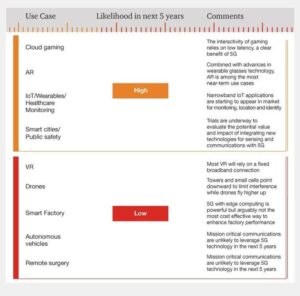Philips built an algorithm that tracks 165 biomarkers to spot illness when a person is contagious but not showing symptoms yet.

Air Force Lt. Col. Jeff Schneider, a Defense Innovation Unit project manager, is shown wearing a watch and ring used to monitor COVID-19 that is part of the Rapid Analysis of Threat Exposure project.
Image: Philips Research North America
The Department of Defense is testing the idea that wearable health trackers and artificial intelligence can spot COVID-19 in the earliest days of infection. The idea is to catch the illness before it has a chance to spread through soldiers living and working together.
Researchers have started enrolling people in the Rapid Analysis of Threat Exposure (RATE) clinical trial with the goal of recruiting 5,000 people. Participants wear a Garmin watch and an Oura ring to monitor their vital signs continuously. The artificial intelligence that powers the RATE algorithm analyzes the data and looks for small changes in heart rate and temperature that can be an early warning sign of illness.
Philips and several partners developed the algorithm. Joseph Frassica, MD, head of research of the Americas, chief medical officer for North America, and vice president at Philips, expects the project to expand to the Veterans Administration at some point and there are applications for civilian use as well.
“This could be a way for organizations to support return to work when it is appropriate,” he said.
SEE: COVID-19 workplace policy (TechRepublic Premium)
The initial goal of the project was to build a system that could detect any infectious disease in its earliest stage when an individual is contagious but doesn’t feel sick.
“We generated a risk score based on 165 different biomarkers extracted from the data set to create a high performing predictor of infection,” Frassica said.
In January, the research team decided to shift the focus of the research to COVID-19 and deploy the algorithm and two wearable health trackers to track infections among military members.
Training data and derived biomarkers
The RATE algorithm analyzes 165 biomarkers to generate a risk score for an individual.
The algorithm uses basic measurements from patients such as temperature and heart rate as well as derived biomarkers, such as heart rate variability.
Frassica said that using this combination of measurements makes the algorithm much better at predicting illness than looking at individual measurements.
“An ensemble of biomarkers is not very sensitive to missing data,” he said. “For example, for one patient you may have heart rate and white blood cell count but for another patient you don’t have all those parameters.”
A risk score is generated every hour for participants.
“Changes that trigger a change in the rate score are usually subtle changes, not threshold value changes but changes in trends,” he said.
When a person’s vital signs are monitored continuously such as during a hospital visit or when wearing a health tracker, doctors can establish a baseline or normal state for the individual’s biomarkers. That makes it easier to spot changes in these measurements that can indicate the onset of illness.
All of the cohort participants who agreed to participate in the DoD’s RATE project include representation from a diverse group of DoD civilians and all ranks of the military.
“After COVID-19 is behind us, we’ll still have a great predictor and we’ll be able to meet the next challenge as well,” he said.
Protecting user privacy
Frassica said that Philips took a privacy-first approach to building the user experience for the monitoring project.
“The algorithm and wearable system collect no personally identifiable data,” he said. “A user signs up through the device and connects to our cloud service.”
The user’s device sends the biometric data to the cloud and the individual signs in to a cloud account to check his or her risk score. The individual is responsible for taking action if the score indicates illness.
“This is completely private, even within the military, so it’s up to the user to report the score,” he said. “It would be easy to have this report to a central data set but we felt that privacy was the best way to go with this.”
Philips researchers used biomarker information from datasets on Physionet.org to train the RATE algorithm. This publicly available data comes from numerous hospitals around the country and researchers around the world use the datasets to build predictive models. The data includes everything from chest x-rays to data from electronic medical records to biomarkers collected during ICU visits.
Frassica said that combined datasets are much more valuable than a single database of patient information from one hospital and that more data overcomes the bias in one hospital’s data.
“Hoarding these data sets is not the right thing to do, we need to do the work to make these datasets available, safe, and de-identified so that we can use them as a basis for AI,” he said.
Open source data sets
Philips built the RATE algorithm with data from multiple sources, including the MIMIC-III clinical database. This large, freely available database includes deidentified health-related data associated with 41,000 patients who stayed in critical care units of the Beth Israel Deaconess Hospital.
This data set is available on Google Cloud Platform and Amazon Web Services. The PhysioNet platform is managed by members of the MIT Laboratory for Computational Physiology. The PhysioNet site has three components: an archive of digital recordings of physiologic signals and related data, software for signal processing and analysis, and tutorials and other educational resources. The website was built as an open-source forum for distributing and exchanging this information, analyzing it, and evaluating new algorithms.
The database includes information such as demographics, vital sign measurements made at the bedside (~1 data point per hour), laboratory test results, procedures, medications, caregiver notes, imaging reports, and mortality.
Philips is working with the Defense Threat Reduction Agency (DTRA), and Defense Innovation Unit (DIU) of the U.S. Department of Defense (DoD) on the project. The DIU’s mission is to increase the adoption of commercial technology throughout the military and expand the national security innovation base.
Also see
Source of Article




